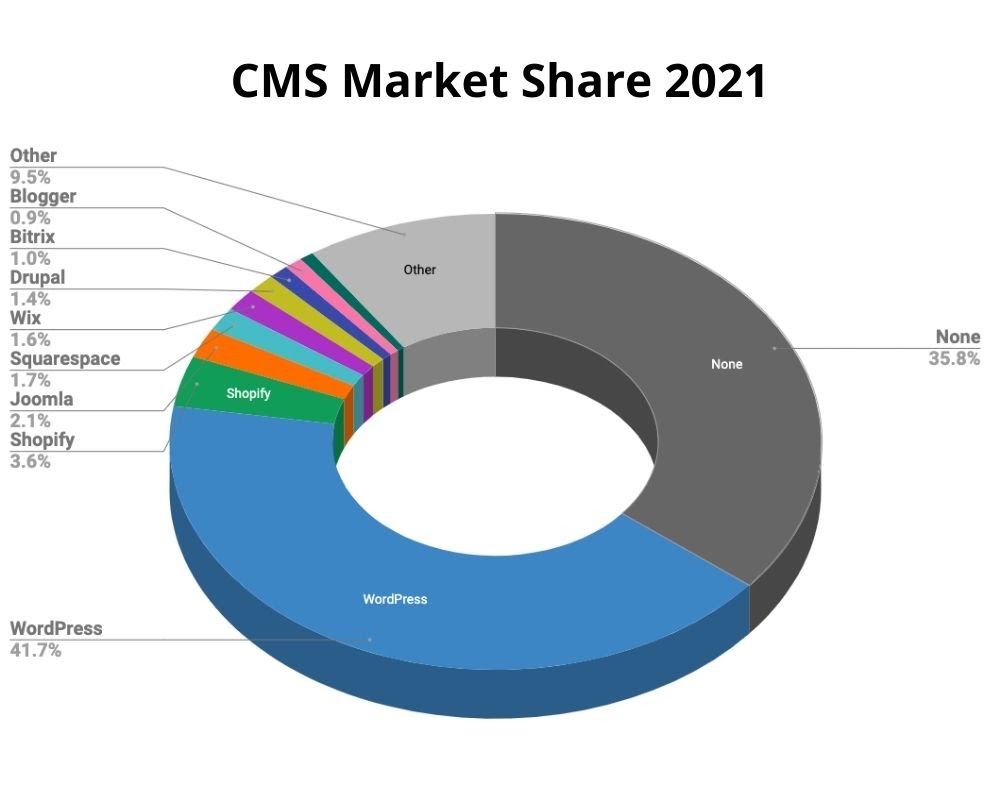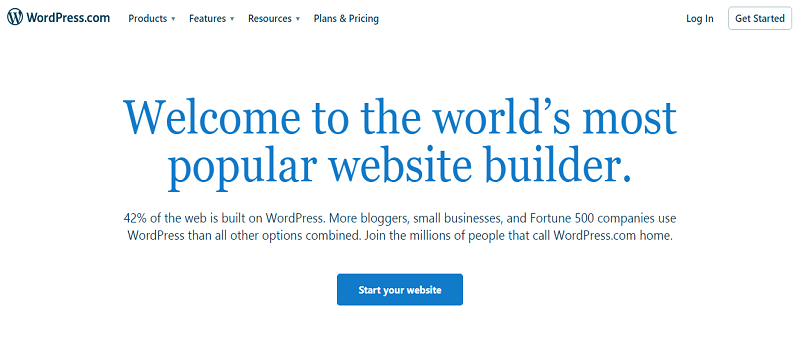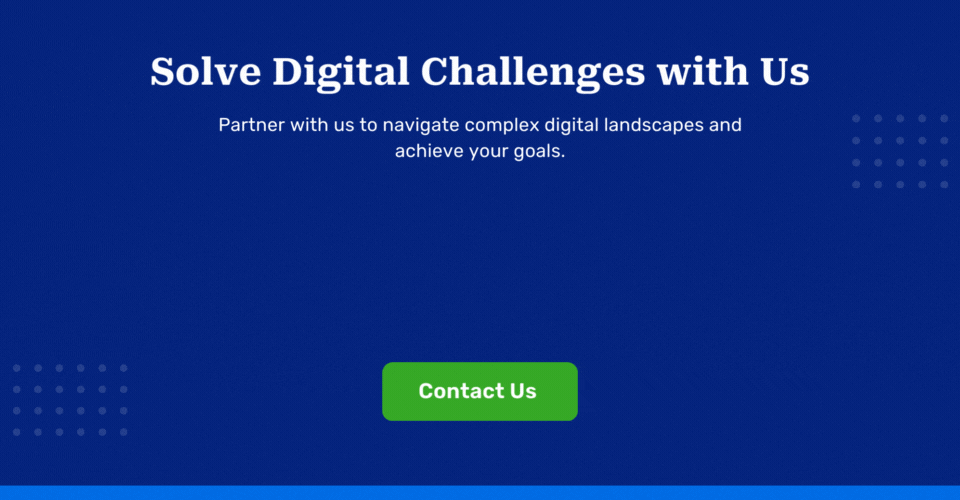A Content Management System, or a CMS as it is more commonly known, allows website owners to edit and control the content of their websites with great ease and convenience. With a CMS, updating text on your site is as simple as writing in Microsoft Word. Similarly, modifying the design layout and the outlook of the website becomes easy for the users.
You don’t need any specific designing and coding skills otherwise necessary to manage your website’s front end. In simple words, a CMS acts as an excellent resource for handling the front end of your website.
As many as 64 million websites use a content management system, as per First Site Guide for handling the front end of the website. WordPress is the most widely used content management system, with a market size of 42.4%, as per CMS Development Stats.
Table of Contents
How to Use a CMS?
With tons of CMS out there, each of them differs in usage and functionalities. Overall, all CMS has a user-friendly interface, and you can take the help of video tutorials to learn how to use them. In a few hours, you can understand your chosen CMS’s basic and advanced features to leverage them for your business.
In a general context, a CMS has two main sections. One is Content Management Application or CMA, and the other gets referred to as Content Delivery Application or CDA.
They work in coordination to manage the website’s backend based on your modification over the front end of the website. Thus, you don’t have to sit and code every time you modify the front end.
Why Use a Content Management System?
You don’t need coding knowledge: If you are not well versed in coding and design, there is no need to worry. Content Management System makes it convenient for the users to manage a website without any technical glitch. Numerous features allow you to add images, videos, etc., without learning the simple ABC of coding.
Provides Convenient Collaboration: Content Management System allows multiple users to work on the website together. The website’s front-end, marketing, and backend team can simultaneously access and work on the website. Thus, one group of professionals needs not to wait for the other team to finish its work over the website.
SEO-friendly features: The Content Management System has been built-in with features that facilitate search engine optimization. It makes it simple for professional SEO service providers to optimize websites to get a higher ranking on the search engines for their clients. SEO-friendly meta titles, descriptions, URLs, etc., acts as a cherry on the top of the cake.
Predesigned Templates: Content Management Systems offers you predesigned templates to ensure that the site looks professional and unique. With tons of options, you can easily find the templates that suit your industry vertical, whether fashion, healthcare, eCommerce, LMS, etc. You can have complete control over these templates as well if you wish to change any of them.
Convenient updating of the Website: The Content Management System has made it very easy to modify and update the site as per your needs. You can change everything from text to thumbnail image or logo – all these features ensure that your area stays in sync with you. It helps you integrate the latest features on the website in minutes and seconds.
With such incredible benefits, CMS has become a predominant part of web management. However, choosing the right CMs is equally important to enjoy its benefits.
When looking for a Content Management System for your website, you should decide why you want one. There are lots of different categories of it available, and each caters to diverse business needs. It would help if you fixed a few things to choose the most compatible one.
A must-read – Attention Entrepreneurs! 6 Top CMS Platforms To Help Develop Your Business Website
Essential things to Decide While Opting for a CMS
1. Do you want complete control over my entire site?
2. Do you want to update the website yourself, or do you prefer to have a professional handle it?
3. Do you want an open-source CMS, or is cost not a driving factor over the project?
4. What kind of site do you want to manage from the chosen CMS? Is it personal, e-commerce, fintech, etc.?
5. How much time can you spare in learning how to use it?
6. How many pages are on your website?
7. What kind of outlook and feel do you want for the site?
8. Is it professional or lively, dark with lots of white space, or light and airy?
You can pick a free Content Management System online that will suit most needs. The only issue is that they can be challenging to set up and very time-consuming. Often users spend several days setting up a free Content Management System and still fail when the PC is outdated or slow.
Here’s a look at the Infographic Below Depicting the Major CMS Used in the Market
Source: Joost
Must-Have Features of a CMS solution
Ease of Use: Most website owners are not technical wizards and don’t want to spend hours learning how to use their new content management system. A good solution will allow users to focus on publishing and marketing content without spending too much time learning how to use it. Integrating your CMS with other software like ecommerce platforms or ticketing solutions can save you time and improve your ability to reach customers online.
Security: Security is paramount when you’re managing digital content for your customers. You don’t want to spend precious time and resources worrying about whether or not your website will be safe from malicious hackers and malware. Likewise, your customers don’t want to spend their time worrying about getting hacked every time they visit your site. To avoid these issues, look for features like SSL, malware filtering, and encryption in any solution you choose. If security isn’t in-built into a platform that you like, consider investing in an external firewall before you move forward with implementation.
Speed: Faster speed is one of the most important features you should consider when choosing a CMS. After all, how can users enjoy your website if it takes too long to load? Most designers nowadays are aware that page speed is essential in search engine optimization, so they often prioritize faster loading time over eye-catching designs. That said, there are plenty of great open-source options that won’t sacrifice aesthetics for substance.
SEO Capabilities: One of the most basic features to look for in a content management system is its search engine optimization (SEO) capabilities. In addition to including keywords and rich metadata, SEO capabilities help ensure that your pages are well organized and coded in such a way that search engines will be able to crawl them easily. If you’re developing an e-commerce site, you can also use the search functionality, which allows customers to search for products by name or critical attribute.
Omnichannel & Multilingual Support: Knowing that users will likely visit your website via mobile, tablet, desktop, and more, you’ll want to make sure your new CMS supports multilingual websites. This way, you can deliver content in multiple languages to each visitor, for example, by displaying an English-language site to English-speaking visitors and an Italian-language website to Italian-speaking visitors. So, if you’re creating multilingual sites for one or more of your clients or prospects, look for solutions that can support your needs—even if it isn’t critical yet.
Scalability: The ultimate goal with any software is to grow with your company, so you want to make sure that your technology grows with it when your business grows. Scalability can come in two forms: technical and functional. Technically speaking, if your software doesn’t support multiple servers or fail-over capabilities (for example), that’s not an option for considerable growth. Likewise, if you can’t quickly build additional features onto your website (such as other landing pages) without substantial cost or effort, then you probably need to look elsewhere.
Built-in Analytics: Good Analytics is at least as necessary to your marketing efforts as it is to your IT team. It allows you to measure user behavior, determine what pages are popular and which aren’t, and optimize content for maximum reader engagement. With a good analytics tool built into your site, you don’t have to go hunting around for data—it’s all right there when you need it. And with Google Analytics integrated into many Content Management Systems, you know it will be easy to set up and use.
Top 5 CMS Options You can go for
1. WordPress
WordPress gets counted among the most popular Content Management systems on the World Wide Web, used by many websites and blogs. If you want to develop a blog or website in no time, WordPress can do that for you in a convenient way – without any technical glitches.
Pros of using WordPress CMS:
- High flexibility & freedom on content management.
- Comes with a block editor that eases the work.
- It has tons of free and premium themes that you can use for the website.
- It is a search engine optimization-friendly CMS.
- Mature community support is available for WordPress.
Cons of using WordPress CMS:
- It does not come with hosting.
- Users are responsible for creating high security of the website.
2. Joomla
Joomla is another content management system you can use for building a website or blog. Joomla gets used by websites like CNN, New York Times, and many more others. It has an easy setup and comes with a single-click installation. Like WordPress, Joomla also does not come with hosting and domain names.
Pros of using Joomla CMS:
- Ideal for handling complicated websites.
- Open source and thus saves cost.
- High community support is available for Joomla.
- Provides users with a significant level of flexibility.
- Also suitable for running and managing an ecommerce platform.
Cons of using Joomla CMS:
- User interface needs improvement.
- limited number of extensions.
3. Drupal
If you need advanced features and functionalities, then Drupal is an excellent option to go with. Many big businesses choose Drupal as their content management software because it has inbuilt SEO functions, making it easier for the sites to rank on search engines.
Pros of using Drupal CMS:
- It comes with multiple modules that you can use as extensions.
- It is an open-source CMS.
- Compatible option for technical users.
- Creating a well-customized website is feasible with Drupal as a CMS.
- Mature community support.
Cons of using Drupal CMS:
- Not a suitable option for non-technical users.
- The CMS is not user-friendly
4. Sitecore
Sitecore is a compatible option for those who value user-friendliness. Most big sites like Financial Times have used silicone as their CMS, which has made it very popular with users and developers. It has an advanced interface that lets users work with zero confusion.
Pros of using Sitecore CMS:
- It is straightforward to use.
- It allows you to create & manage multiple categories and subcategories of content.
- It allows easy integration of the Application program interface.
- Suitable for developing a scalable website.
- You can easily create a multi-server setup on Sitecore.
Cons of using Sitecore CMS:
- It does not have a gentle learning curve.
- Not a budget-friendly option.
5. Magento
If you want a content management system with more functionality and advanced features, Magento is the right solution. Many online stores prefer Magento as it allows them to easily manage their inventory, products, etc. Moreover, it is available in both open-source versions and paid versions.
Pros of using Magento CMS:
- It is highly customizable.
- Widely regarded as a powerful CMS for managing eCommerce websites.
- Highly scalable.
- It comes with advanced security features.
- Tons of options for choosing the ideal Payment Gateway.
Cons of using Magento CMS:
- The free version does not come with an advanced level of support.
- Not a budget-friendly option.
Wrapping Up
The CMS mentioned above are considered best in their category. If you desire a user-friendly content management system, easy to customize, and has numerous features, these CMS are the best way to go.
CMS development company can help you choose the most compatible CMS based on your enterprise, objectives, and goals.











